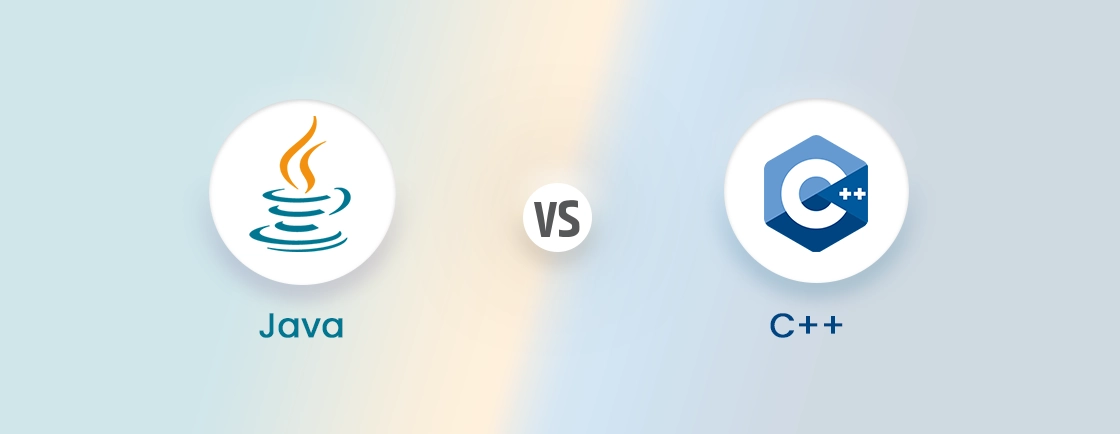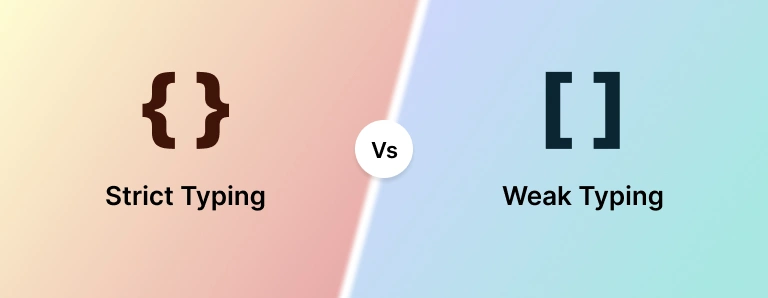Table of Contents
Let’s say you want to build cross-platform apps for both iOS and Android. Then out of so many platforms available, two of the popular ones are React Native and Ionic.
Both frameworks offer distinct advantages. React Native delivers near-native performance with JavaScript. And Ionic, on the other hand, leverages web technologies for cross-platform development. Your decision hinges on factors like performance needs, development speed, and team expertise.
Through this blog, we’ll compare React Native vs Ionic and break down their strengths, trade-offs, and more. Plus, I’ll show how the mobile app experts choose the suitable technology for their projects. Let’s start with a head-to-head comparison.
React Native vs Ionic: Comparison Table
| Factor | React Native | Ionic |
|---|---|---|
| Purpose | Build high-performance, near-native mobile apps | Develop cross-platform apps using web technologies |
| Core Technology | JavaScript + React (Native components) | JavaScript/TypeScript + WebView (HTML, CSS) |
| GitHub Stars | 66k | 34k |
| Performance | Near-native (better for CPU-heavy tasks) | Slightly slower (WebView-dependent) |
| UI Experience | Native-like UI with platform-specific components | Web-like UI (customizable but less native feel) |
| Code Reusability | ~90% cross-platform (some platform-specific tweaks needed) | ~100% (same codebase for web & mobile) |
| Code Testing | Requires native simulators & device tests | Easier (runs in browsers like a web app) |
| Learning Curve | Moderate (requires React & native concepts) | Easier (familiar for web developers) |
| Development Speed | Fast (hot reloading, pre-built components) | Faster (web-based, rapid prototyping) |
| Community & Support | Large (backed by Meta, strong ecosystem) | Strong (backed by Ionic team, wide plugin library) |
Choose React Native for performance-intensive apps needing a native feel. But Ionic is an excellent platform for faster development, web-friendly apps, and easier maintenance.
Overview of React Native
Developed by Meta (Facebook), React Native is an open-source mobile app development framework. With it, you can build cross-platform mobile apps using JavaScript and React. Unlike traditional hybrid frameworks, it renders native UI components. That delivers near-native performance while still allowing ~90% code reuse across platforms.
React Native architecture bridges JavaScript and native platform APIs using a virtual DOM and asynchronous communication. Developers write JavaScript/TypeScript, which communicates with native modules via a bridge. That enables access to device features (camera, GPS, etc.).
The framework then compiles UI components into native views (e.g., Android’s View or iOS’s UIView).
Key Features of React Native
- Cross-platform development: Single codebase for iOS & Android (~90% code reuse).
- Native-like performance: Direct access to device APIs (camera, GPS, etc.).
- Rich ecosystem: Large library of third-party plugins (Expo, React Navigation).
- Live reloading: Faster debugging and updates without full rebuilds.
- Strong community: Backed by Meta, widely adopted by companies like Shopify, Microsoft, and Tesla.
Pros of React Native
- Near-native performance (better than hybrid frameworks).
- Reusable code (saves time and effort).
- Large community & third-party plugins.
- Live reloading for faster debugging.
- Seamless integration with native code (if needed).
Cons of React Native
- Still requires native knowledge for advanced features.
- Larger app size compared to pure native apps.
- Bridge latency can affect complex animations.
- Fewer UI components out of the box (vs. Flutter).
React Native is the best platform for apps needing near-native performance with UI/UX consistency. And for the best results, our React Native development company would be suitable.
Overview of Ionic
Ionic is an open-source UI toolkit for building cross-platform mobile and web apps using web technologies (HTML, CSS, and JavaScript/TypeScript). Unlike React Native, Ionic apps run in a WebView (or Capacitor/Cordova for native access). That makes them ideal for developers who want to leverage existing web skills for mobile development.
Ionic apps are essentially progressive web apps (PWAs) wrapped in a native shell using Capacitor (or Cordova). The UI is rendered using web components, while plugins enable access to native device features (camera, GPS, etc.).
This approach allows one codebase to run on iOS, Android, and the web with minimal changes.
Key Features of Ionic
- Web-based Development: Uses standard HTML, CSS, and JavaScript/TypeScript.
- Cross-Platform: Single codebase for iOS, Android, and web.
- Rich UI Components: Pre-built, customizable components with native-like styling.
- Capacitor Integration: Modern alternative to Cordova for native functionality.
- Strong Ecosystem: Works with Angular, React, or Vue.js.
Pros of Ionic
- Faster development (ideal for MVPs and web-first apps).
- True code reusability (same app runs on mobile + web).
- Easier learning curve (familiar for web developers).
- Highly customizable UI with theming support.
- Large plugin library (Capacitor/Cordova extensions).
Cons of Ionic
- Lower performance for graphics-heavy apps (due to WebView rendering).
- Limited native look/feel compared to React Native.
- Debugging can be tricky (especially native plugin issues).
- Smaller community than React Native.
Ionic is for those who prioritize rapid development over peak performance. And what’s great is that you’ll need one app for mobile and web with just minimal changes.
Detailed Difference Between React Native and Ionic
Even with the overviews and a basic comparison, the choice between React Native and Ionic can be a little tricky. Both of them are excellent with cross-platform development. But the best one depends on your project’s performance needs, development speed, and team expertise.
Popularity
React Native enjoys widespread adoption among tech giants like Facebook, Instagram, and Shopify, thanks to its Meta backing. It has a massive GitHub presence with over 115,000 stars and an active developer community.
Many Fortune 500 companies use it for building high-performance mobile apps, making it a trusted choice in the industry.
Ionic, while popular, has a smaller but dedicated following, with around 50,000 GitHub stars. It’s favored by web developers and startups for its simplicity and cross-platform capabilities.
Companies like Burger King and Amtrak use Ionic, but it doesn’t have the same enterprise dominance as React Native.
Verdict
React Native is more popular in large-scale development, while Ionic is ideal for web-first projects.
Technology Stack
React Native is built on JavaScript and React, but unlike traditional hybrid frameworks, it compiles UI components into native views. This means apps feel more like native iOS or Android applications rather than web apps. It uses a bridge to communicate between JavaScript and native modules, which helps in accessing device-specific features efficiently.
Ionic relies entirely on web technologies—HTML, CSS, and JavaScript—running inside a WebView (using Capacitor or Cordova). This makes it extremely familiar to web developers but limits performance since it doesn’t render true native components.
Verdict
React Native is better for native-like apps, while Ionic is best for web-based mobile solutions.
Learning Curve
React Native requires knowledge of React and some understanding of native mobile development concepts. Developers often need to learn platform-specific adjustments for iOS and Android, which can be challenging for beginners. However, those familiar with JavaScript will find it easier to pick up.
Ionic is much simpler for web developers since it uses standard HTML, CSS, and JavaScript. There’s no need to learn native mobile development, making it a great choice for teams transitioning from web to mobile.
Verdict
Ionic has a gentler learning curve, while React Native requires more specialized knowledge.
Performance
React Native delivers near-native performance because it renders actual native UI components rather than web views. Complex animations and heavy computations run smoothly, making it suitable for high-performance apps like social media platforms or eCommerce stores.
Ionic, being WebView-based, struggles with performance-intensive tasks. Animations can feel sluggish, and apps may lag when handling large datasets or complex interactions. It works well for simpler applications but isn’t ideal for graphics-heavy apps.
Verdict
React Native is far superior in performance, while Ionic is better suited for lightweight apps.
Code Reusability
React Native allows around 90% code reuse between iOS and Android. But some platform-specific adjustments are often needed for native modules or UI elements. This means developers might still need to write separate code for certain features.
Ionic achieves nearly 100% code reuse across mobile and web platforms since it’s fundamentally a web app wrapped in a native shell. The same codebase can run on iOS, Android, and the web with minimal changes.
Verdict
Ionic offers better code reusability, while React Native requires some platform-specific tweaks.
Development Time & Speed
React Native speeds up development with features like hot reloading and a rich set of pre-built components. However, debugging native issues can slow things down, especially when dealing with platform-specific bugs.
Ionic is faster for prototyping because it leverages web development tools like Chrome DevTools. Developers can build and test apps in a browser before deploying to mobile, significantly reducing iteration time.
Verdict
Ionic allows for quicker development, while React Native balances speed with performance.
Third-party Integrations
React Native has a vast ecosystem with strong support for libraries like Redux, Firebase, and Axios. Native modules sometimes require additional bridging, but most popular services have React Native-compatible SDKs.
Ionic relies heavily on Capacitor or Cordova plugins for native functionality. While many plugins exist, they may not always be as up-to-date or optimized as native SDKs.
Verdict
React Native has better third-party integration support.
CI & CD
React Native requires more complex CI/CD pipelines due to its native dependencies. Building for iOS demands Xcode and macOS environments, while Android needs Gradle configurations. Tools like Fastlane help automate deployments. But setting up proper code signing and app store submissions still requires native platform knowledge.
Ionic simplifies CI/CD significantly since it’s fundamentally a web app. The same build process works across platforms. And tools like GitHub Actions or Bitrise can easily package the WebView-based app.
Capacitor streamlines app store submissions by handling much of the native boilerplate. However, WebView updates can sometimes break functionality unexpectedly.
Verdict
Ionic is simpler for CI/CD; React Native needs more setup.
Debugging
Debugging React Native apps involves multiple layers. JavaScript errors appear in Chrome DevTools, but native crashes require Xcode or Android Studio. The bridge between JavaScript and native code can create hard-to-diagnose issues, especially with third-party native modules.
Performance profiling requires platform-specific tools like Instruments or Android Profiler.
Ionic debugging is more straightforward for web developers. Chrome DevTools provide complete visibility into the app’s behavior since it’s essentially a web page. However, debugging native plugin interactions or WebView-specific issues requires switching to platform tools.
Performance bottlenecks in the WebView environment can be particularly challenging to optimize.
Verdict
Ionic is easier to debug for web developers.
Enterprise Compatibility
React Native shines in enterprise environments due to its Meta backing and proven scalability. Large organizations like Walmart, Tesla, and Bloomberg use it for mission-critical apps. The framework handles complex business logic well and integrates smoothly with existing native codebases.
Ionic fits well in enterprise scenarios where web compatibility is prioritized. Companies needing unified web and mobile experiences benefit from its single codebase approach. However, performance limitations make it less ideal for customer-facing apps with heavy interaction requirements.
Verdict
React Native for enterprise; Ionic for lightweight solutions.
Community & Support
The React Native community is massive and highly active. Meta’s backing ensures regular updates and long-term viability. Thousands of third-party libraries exist for nearly any functionality needed. Enterprise support options are available through consulting firms and dedicated React Native teams.
Ionic‘s community, while smaller, is very dedicated. The Ionic team provides excellent commercial support options for enterprises. The framework benefits from web developer crossover, meaning many solutions can be adapted from standard web development practices.
Verdict
React Native wins for community depth.
Final Verdict
All in all, React Native remains the superior choice for those prioritizing performance, scalability, and native capabilities. Its enterprise adoption, strong community, and Meta backing make it a safe long-term investment.
But Ionic excels when rapid development and web compatibility are primary concerns. It’s especially valuable when existing web development teams need to expand to mobile.
If you’re still not sure which one of these two work best for your mobile app, consult with our mobile app development company.
When to Choose React Native & Ionic?
Now you what’s what—how these two platforms compare. So it’s time to make things a little clearer.
Choose React Native When:
- You need high performance: For apps with complex animations, heavy interactions (like social media or gaming), or demanding processing.
- Native look & feel matters: If your app needs to match iOS/Android design standards perfectly.
- Your team knows JavaScript/React: Easier to adopt if developers already work with React.
- Long-term scalability is key: Better for apps that may grow into large, enterprise-level products.
Choose Ionic When:
- You want one codebase for web + mobile: Ideal for PWAs or apps that need to run on both browsers and phones.
- Development speed is critical: Faster to build and deploy, especially for simple or content-focused apps.
- Your team is web-focused: Uses standard HTML/CSS/JS, so web developers can start quickly.
- Budget is limited: Lower learning curve & easier maintenance reduce costs.
All in all, React Native means power and performance, while Ionic means speed and flexibility.
So, Which is Better, React Native or Ionic?
Well, the choice between React Native and Ionic isn’t about which framework is “better”—it’s about which one aligns with your project’s needs.
Pick React Native if you want near-native performance and a smoother user experience. But when you want rapid development and a single codebase for web and mobile apps, Ionic will be better. Ultimately, React Native excels in power and polish, while Ionic wins in speed and flexibility.
So, want help with implementing the best mobile app with the suitable platform? Then consult with us today!
FAQs on React Native vs Ionic
Which has better access to native device features? React Native or Ionic?
Both can access native features, but React Native often has more direct and readily available libraries.
Which has lower development costs? React Native or Ionic?
Both aim to reduce costs by using a single codebase, but specific project needs can influence this.
How do React Native and Ionic handle UI libraries?
React Native has a rich ecosystem of native component libraries. Ionic provides its own set of pre-built UI components that mimic native styles.
Which is better for performance: React Native or Ionic?
React Native wins for performance. It compiles to native code, making animations and heavy tasks smoother. Ionic uses WebView, which can lag with complex UIs.
How do React Native and Ionic handle state management?
Both are unopinionated and allow the use of popular JavaScript state management libraries like Redux, Zustand, or Context API.
Can I convert an Ionic app to React Native later?
Not directly. You’d need to rebuild most of the UI and logic since their architectures differ (WebView vs. native). Some business logic in JavaScript could be reused.
Compare the best tech side by side.
Our in-depth comparisons help you see features, pros & cons, and choose the right tools confidently.





